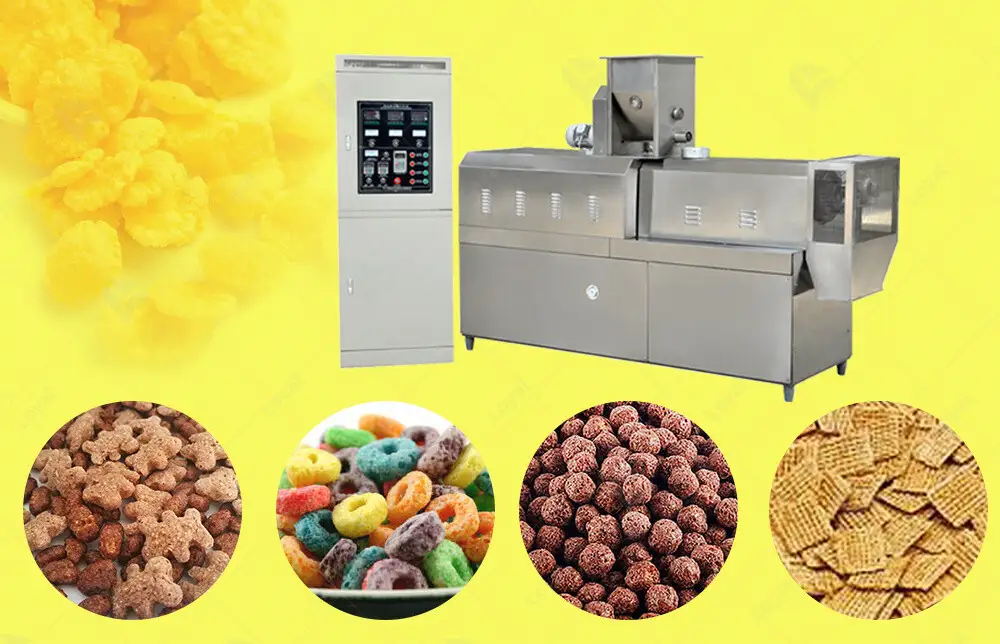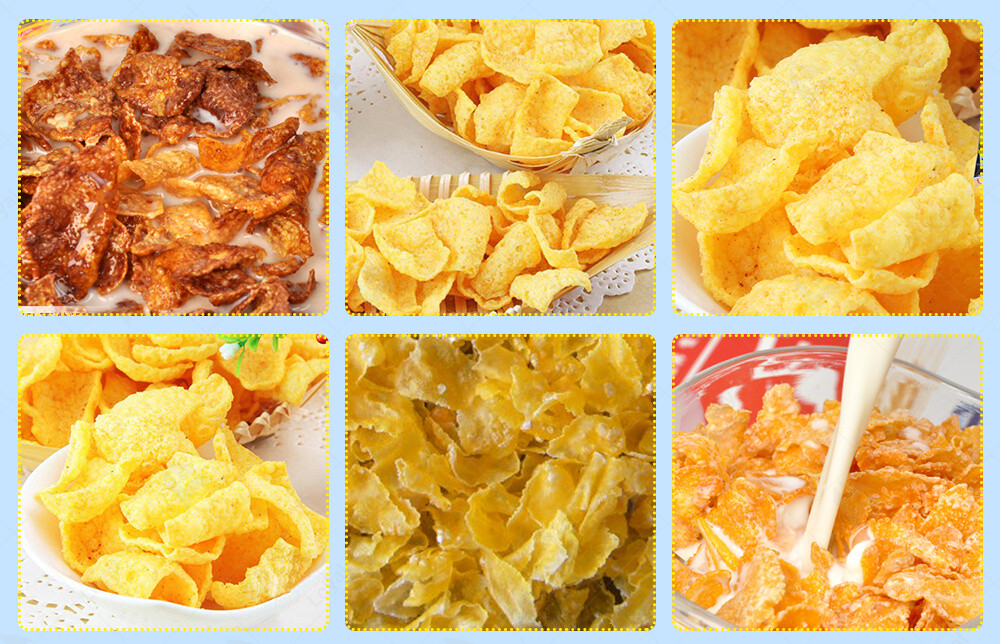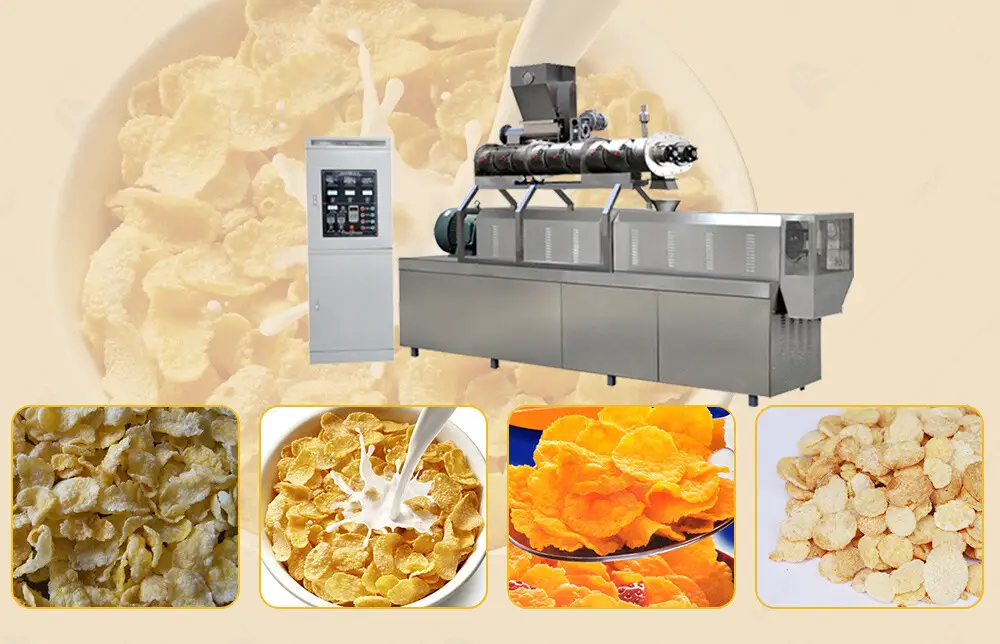The Ultimate Guide to high quality corn flakes production line in 2024
Understanding the High Quality Corn Flakes Production Line
he food processing industry has experienced significant advancements over the years, with automation playing a pivotal role in transforming traditional manufacturing methods. Among the various products that have benefited from these advancements, corn flakes stand out due to their widespread popularity and demand. The introduction of a fully automatic high quality corn flakes production line has revolutionized the way these breakfast cereals are manufactured, ensuring enhanced efficiency, consistent quality, and improved safety standards.
1.A high quality corn flakes production line integrates advanced machinery and technology to streamline the entire production process, from raw material preparation to final packaging. This automation not only boosts productivity but also minimizes human intervention, reducing the risk of contamination and ensuring that the end product meets stringent quality standards. In this article, we will delve into the components, benefits, technological advancements, and future trends of a fully automatic high quality corn flakes production line, providing a comprehensive understanding of how these systems enhance efficiency and quality in corn flakes production.
2.Components of a Fully Automatic High Quality Corn Flakes Production Line
A fully automatic high quality corn flakes production line comprises several key components, each playing a crucial role in the production process. Understanding these components is essential for appreciating how the system operates as a whole.
Grain Cleaning and Conditioning Units | The first step in the production process involves cleaning and conditioning the grains. These units remove impurities and ensure that the corn kernels are in optimal condition for processing. High-efficiency cleaners and de-stoners are used to separate foreign materials, while conditioning units adjust the moisture content of the grains, preparing them for cooking. |
Cooking and Flaking Machines | Once the grains are cleaned and conditioned, they are transferred to cooking machines. These machines use precise temperature and pressure controls to cook the corn, breaking down the starches and making the kernels pliable for flaking. The cooked corn is then passed through flaking machines, where it is pressed into thin flakes. The consistency and thickness of the flakes are critical for achieving the desired texture and quality. |
Drying and Toasting Systems
| The flaked corn needs to be dried and toasted to achieve the characteristic crunch and flavor of corn flakes. Drying systems use controlled airflow and temperature to remove excess moisture from the flakes, while toasting systems evenly toast the flakes to a golden brown color. These systems are designed to maintain uniformity in the final product, ensuring that every batch of corn flakes meets high quality standards. |
Packaging Machinery
| The final step in the production process involves packaging the corn flakes. Advanced packaging machinery ensures that the flakes are packed in airtight, moisture-proof containers, preserving their freshness and extending their shelf life. These machines are capable of high-speed operation, allowing for efficient packaging of large quantities of corn flakes. |
Each of these components is integral to the operation of a fully automatic high quality corn flakes production line, contributing to the overall efficiency and quality of the production process.

Benefits of Automation in Corn Flakes Production
The implementation of a fully automatic high quality corn flakes production line brings numerous advantages to manufacturers. Automation not only enhances the overall efficiency of the production process but also ensures that the end product meets the highest quality standards. Below are some of the key benefits of integrating automation into corn flakes production.
1. Increased Production Efficiency
One of the most significant benefits of a fully automatic high quality corn flakes production line is the substantial increase in production efficiency. Automated systems can operate continuously, with minimal downtime for maintenance or human intervention. This continuous operation allows for higher production rates compared to manual or semi-automated processes. Additionally, automated machinery is capable of performing complex tasks with precision and speed, reducing the time required for each production cycle.
2. Consistent Product Quality
Consistency is crucial in the food industry, especially for products like corn flakes that consumers expect to have the same taste and texture every time. A high quality corn flakes production line utilizes advanced control systems to monitor and adjust various parameters throughout the production process. This ensures that each batch of corn flakes is produced to the same high standards, minimizing variations in quality. Automated systems also reduce the risk of human error, further contributing to product consistency.
3. Reduced Labor Costs
Automation in corn flakes production significantly reduces the need for manual labor. Automated systems can perform tasks that would otherwise require multiple workers, leading to a decrease in labor costs. By minimizing the reliance on human labor, manufacturers can allocate resources more efficiently and focus on other critical areas of the business. Additionally, reduced labor requirements can mitigate the challenges of labor shortages and high turnover rates in the manufacturing industry.
4. Enhanced Safety and Hygiene Standards
A fully automatic high quality corn flakes production line enhances safety and hygiene standards in the production facility. Automated machinery reduces the need for human contact with the product, minimizing the risk of contamination. Furthermore, advanced systems are designed with built-in safety features to protect workers from potential hazards associated with machinery operation. This results in a safer working environment and ensures that the final product meets stringent hygiene standards.
5. Lower Operational Costs
While the initial investment in a fully automatic high quality corn flakes production line can be substantial, the long-term cost savings are significant. Automated systems are designed for energy efficiency, reducing the overall energy consumption of the production facility. Additionally, the increased efficiency and reduced labor costs associated with automation lead to lower operational expenses. Over time, these cost savings can offset the initial investment, providing a favorable return on investment for manufacturers.
In summary, the benefits of integrating a fully automatic high quality corn flakes production line into the manufacturing process are multifaceted. From increased production efficiency and consistent product quality to reduced labor costs and enhanced safety and hygiene standards, automation plays a pivotal role in optimizing the production of corn flakes. By embracing these advancements, manufacturers can stay competitive in the market and meet the growing demand for high-quality breakfast cereals.

Challenges and Solutions in Implementing a High Quality Corn Flakes Production Line
The food processing industry has seen a remarkable transformation with the advent of new technologies, and the production of corn flakes is no exception. A fully automatic high quality corn flakes production line benefits immensely from these technological advancements, which enhance efficiency, improve product quality, and reduce operational costs. Here are some of the key technological innovations that are revolutionizing corn flakes production.
1. Integration of IoT and Smart Technologies
The Internet of Things (IoT) and smart technologies have made significant inroads into food manufacturing, enabling real-time monitoring and control of production processes. In a high quality corn flakes production line, IoT devices can track various parameters such as temperature, humidity, and machine performance. This data is then analyzed to optimize the production process, predict maintenance needs, and prevent potential issues before they arise. The result is a more efficient and reliable production line with reduced downtime and enhanced product quality.
2. Advanced Control Systems for Precise Processing
Modern high quality corn flakes production lines are equipped with advanced control systems that allow for precise adjustments at every stage of the production process. These systems use sophisticated algorithms to control variables such as cooking temperature, flaking pressure, and drying time. By maintaining optimal conditions throughout the process, these control systems ensure that the corn flakes have a consistent texture, flavor, and appearance. This precision is crucial for meeting consumer expectations and maintaining a competitive edge in the market.
3. Energy-Efficient Machinery
Energy consumption is a major concern in food manufacturing, both from a cost and an environmental perspective. The latest high quality corn flakes production lines are designed with energy efficiency in mind, utilizing technologies that reduce power usage without compromising performance. For instance, modern drying and toasting systems use advanced heating elements and airflow designs to achieve the desired results with less energy. These energy-efficient machines not only lower operational costs but also contribute to sustainability efforts by reducing the carbon footprint of the production process.
4. Innovations in Packaging Technology
Packaging is a critical aspect of corn flakes production, as it directly affects the product's shelf life, freshness, and appeal to consumers. Recent advancements in packaging technology have introduced more efficient and versatile solutions for a high quality corn flakes production line. Automated packaging machines can handle various packaging materials and formats, ensuring that the corn flakes are securely packed and protected from moisture and contaminants. Additionally, smart packaging solutions, such as those with embedded sensors, can provide real-time information about the product's condition, further enhancing quality control.
Technological advancements in a fully automatic high quality corn flakes production line are driving significant improvements in efficiency, quality, and sustainability. By leveraging IoT and smart technologies, advanced control systems, energy-efficient machinery, and innovative packaging solutions, manufacturers can stay ahead of the curve and meet the evolving demands of the market.

Challenges and Solutions in Implementing Fully Automatic Production Lines
For industry stakeholders, the message is clear: embracing the advancements of a fully automatic high quality corn flakes production line is not just an option, but a necessity for staying competitive in today's fast-paced market. Here are some key action points to consider:
Invest in Advanced Automation
Manufacturers should prioritize investment in fully automated high quality corn flakes production lines. This investment will pay off in the form of increased production efficiency, consistent product quality, and reduced operational costs. By staying ahead of technological trends, companies can ensure they remain competitive and capable of meeting growing consumer demand.
Focus on Continuous Improvement
The food manufacturing industry is constantly evolving, with new technologies and methodologies emerging regularly. Industry stakeholders must commit to continuous improvement by regularly upgrading their production lines, incorporating the latest innovations, and maintaining rigorous quality control standards. This proactive approach will help manufacturers adapt to market changes and maintain their leadership positions.
Enhance Collaboration and Knowledge Sharing
Collaboration between manufacturers, equipment suppliers, and technology providers is essential for driving innovation in the corn flakes production industry. By fostering open communication and knowledge sharing, stakeholders can collectively address challenges, develop new solutions, and advance the industry as a whole. Participating in industry conferences, joining professional associations, and engaging in collaborative research projects are effective ways to enhance this collaboration.
Prioritize Sustainability
Sustainability is becoming an increasingly important factor in consumer purchasing decisions. Industry stakeholders should prioritize the development and implementation of eco-friendly practices within their fully automatic high quality corn flakes production lines. This includes investing in energy-efficient machinery, reducing waste, and adopting sustainable packaging solutions. By doing so, manufacturers can meet consumer expectations and contribute to environmental conservation.
Educate and Train Workforce
Even with advanced automation, a skilled workforce remains crucial for the successful operation of high quality corn flakes production lines. Manufacturers should invest in ongoing education and training programs for their employees, ensuring they are well-versed in the latest technologies and best practices. A knowledgeable workforce will be better equipped to maximize the benefits of automation and contribute to the overall success of the production line.
Final Thoughts
The journey towards a fully automatic high quality corn flakes production line is an exciting one, filled with opportunities for innovation and growth. By embracing automation, investing in technology, and prioritizing sustainability, industry stakeholders can enhance efficiency and quality in corn flakes production. This not only benefits manufacturers but also ensures that consumers receive the high-quality products they expect and deserve. The future of corn flakes production is bright, and those who seize the opportunities presented by these advancements will undoubtedly lead the way in this dynamic industry.

Reference
The following are five authoritative foreign literature websites in the field of Industrial food machinery:
1. Food Engineering Magazine
Website: https://www.foodengineeringmag.com/
2.Food Processing Magazine
Website: https://www.foodprocessing.com/
3.Journal of Food Engineering
Website:https://www.journals.elsevier.com/journal-of-food-engineering
4. Food Manufacturing Magazine
Website:https://www.foodmanufacturing.com/
5. International Journal of Food Science & Technology
Website:https://onlinelibrary.wiley.com/












